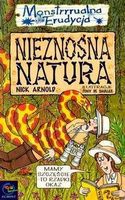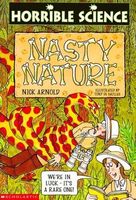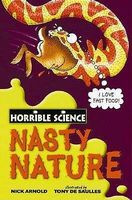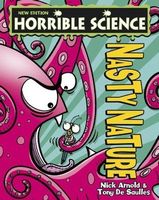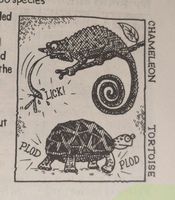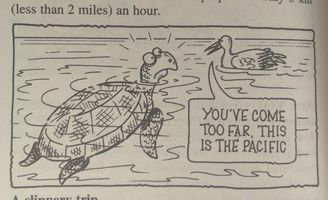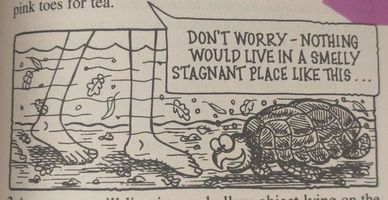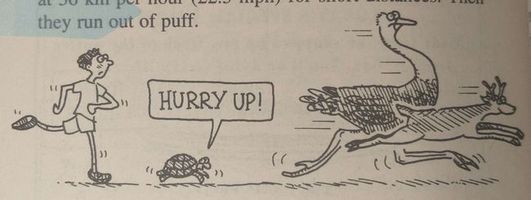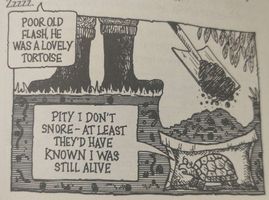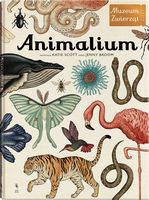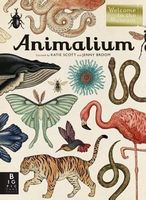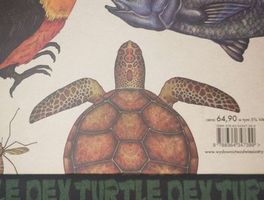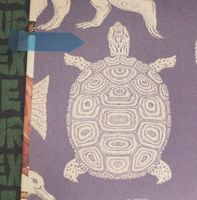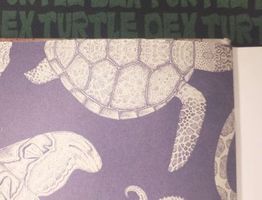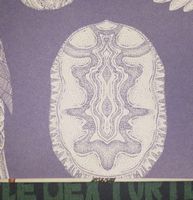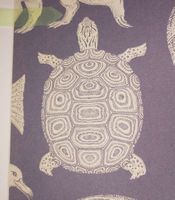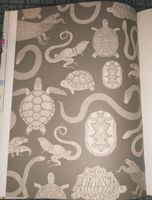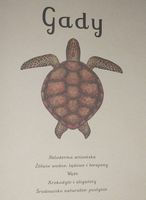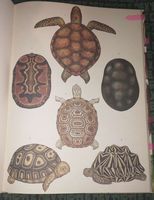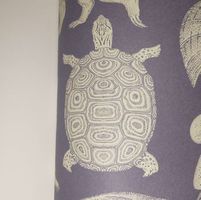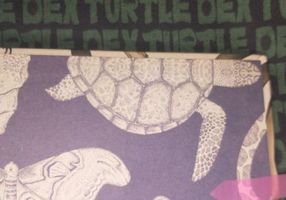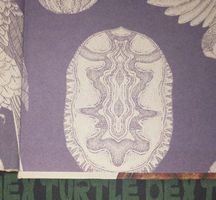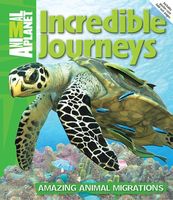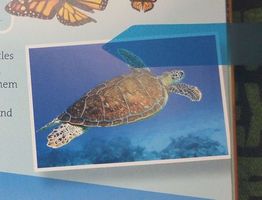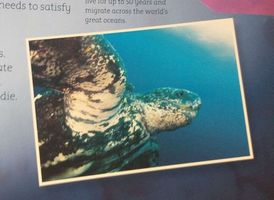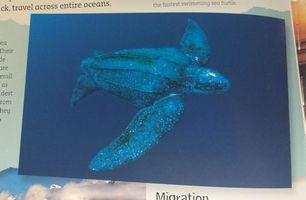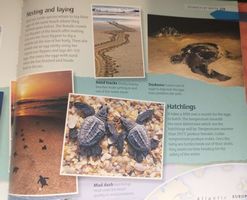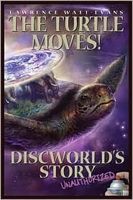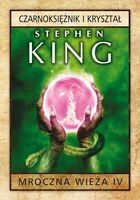 Tytuł: Mroczna Wieża IV: Czarnoksiężnik i kryształ
Tytuł: Mroczna Wieża IV: Czarnoksiężnik i kryształ
Tytuł oryginału: The Dark Tower IV: Wizard and Glass
Autor(zy): Stephen King
Tłumaczenie: Krzysztof Sokołowski
Rok wydania: 1997 (ENG), 2002 (PL)
Wydawnictwo: Donald M. Grant (ENG), Albatros (PL)
Dlaczego w bazie: Czwarty tom serii Mroczna Wieża, ze sporą ilością żółwich fragmentów. Poniżej przytaczamy wszystkie:
Pierwszy przypadek to wzmianka w formie porównania:
Pociąg jechał teraz przez góry, które wcześniej widzieli na horyzoncie: ołowianoszare szczyty pędziły ku nim jak wicher, a potem zostawały w tyle, odsłaniając jałowe doliny, w których pełzały chrząszcze wielkości żółwi morskich.1
Ponownie, żółwie użyte jako porównanie:
Miasteczko Candleton, choć zrujnowane i zatrute promieniowaniem, nie było bynajmniej martwe. Po wielu, wielu stuleciach wciąż kołatało się w nim życie: życie żuków wielkości żółwi, ptaków przypominających miniaturowe, zdeformowane smoki, i kilku zataczających się robotów, wchodzących i wychodzących z walących się budynków, niczym żywe trupy z nierdzewnej stali, zgrzytających stawami i nieprzytomnie mrugających atomowymi oczami.2
Wzmianka o żukożółwiach:
Stojąca na miejskim placu fontanna pękła na dwie części, plując nie wodą, lecz kurzem, wężami, zmutowanymi skorpionami i kilkoma kręcącymi się w kółko żukami-żółwiami.3
Dziwny przypadek, żółwi wierszyk tylko w polskiej wersji, zdaje się, że coś poszło nie tak w tłumaczeniu:
Jeden z nich reklamował koncerty Sex Pistols (trasa reunion, co wydało mu się strasznie śmieszne, Pistolsi bowiem byli akurat tą grupą, która nigdy nie miała się zebrać po rozłamie), inny komika Adama Sandlera, o którym do tej pory nie słyszał, jeszcze inny film Rzemiosło, o nastoletnich czarownicach. Obok, wypisany stłumionym różem, widniał następujący wiersz:
Spójrzcie na Żółwia o ogromnej skorupie!
Co na swych plecach całą Ziemię niesie.
Jeśli chcesz pójść i włączyć się do zabawy,
Idź tam, gdzie wiedzie Promień łaskawy.4
Żółw w nazwie lokalizacji:
Według informacji zapisanych na tej tablicy dwie firmy — Mills Construction i Sombra Real Estate — miały wspólnie wybudować w tym miejscu luksusowe osiedle Turtle Bay. Kiedy? WKRÓTCE POCZĄTEK PRAC, obiecywały.5
Żółw w nazwie sklepu:
Był tu sklep wielobranżowy Niedźwiedź i Żółw, w którym, z rozkazu Kompanii Vi Castis, górnikom nie wolno było robić zakupów, sklep kompanii, w którym oprócz kopaczy nikt zakupów nie robił, oraz więzienie i ratusz, mieszczące się pod jednym dachem; przed nimi zaś stał młyn, szubienica oraz sześć hałaśliwych barów, każdy następny gorszy i bardziej niebezpieczny od poprzedniego.6
Wzmianka o totemie żółwia, jednego ze strażników Mrocznej Wieży:
Nagle przestała myśleć… i przestała czuć w rękach ciężar pudła z zakupami, wyrwanego jej równie mocnymi co zręcznymi dłońmi. Krzyknęła chrapliwie. Osłoniła oczy przed słońcem i zobaczyła Eldreda Jonasa, uroczo uśmiechniętego, stojącego między totemami Niedźwiedzia i Żółwia. Włosy, długie, siwe i, w jej opinii, piękne, opadały mu na ramiona.7
Nawiązanie do żółwiej powolności:
Gdyby chciał, Sheemie byłby w domu pań Delgado dwie godziny temu, wracał jednak z Coos w żółwim tempie. List, który wsadził sobie za koszulę, ciążył mu jak kamień. Takie to było straszne, takie straszne! Nawet myśleć o tym nie potrafił, bo myślenie źle mu szło, ano tak.8
Wielki Żółw jako powiedzenie:
Na Wielkiego Żółwia — szepnął Reynolds, uderzając się trzykrotnie w grdykę. Panicznie bał się wścieklizny.
— Wielki Żółw na nic ci się nie zda, jeśli kryształ zawładnie tobą — stwierdził ponuro Latigo i zwrócił się do Jonasa.9
Znów, żółw tylko w polskiej wersji, wygląda na to, że tłumacz się pomylił „turkey” z „turtle”.
Pettie żyła. Ubrana w poplamioną nocną koszulę (można powiedzieć, kombinezon roboczy) stała na ścieżce prowadzącej do wygódki za budynkiem, złożywszy ręce nad obwisłym biustem, poniżej żółwich fałd na szyi.10
Ponownie, żółw jako zawołanie:
— Obudź się, sai! Wstawaj! W imię Żółwia i Niedźwiedzia, obudź się!11
Nietypowo, w dwóch kolejnych fragmentach żółw, strażnik Mrocznej Wieży, zabiera głos:
Wtem, niespodziewanie, Roland poznaje ten głos. Jest to głos Żółwia.
Patrzy przed siebie i widzi jaskrawe, złotobłękitne światło, przebijające mrok Jądra Gromu. Zaledwie zdołał je zauważyć, wylatuje z ciemności, jakby wylęgał się z jaja; stworzenie wreszcie narodzone.
— Światło! Niech się stanie światło!
krzyczy głos Żółwia; Roland, bojący się ślepoty, zasłania oczy dłońmi i patrzy przez palce.12
— Zabijesz wszystko i wszystkich, których kochasz, mówi głos Żółwia, głos okrutny tym razem, twardy. — A Wieża pozostanie dla ciebie zamknięta.
Rewolwerowiec wciąga powietrze w płuca, zbiera całą swą siłę; gdy wykrzykuje Żółwiowi odpowiedź, czyni to w imieniu pokoleń, których krew płynie w jego żyłach.
— NIE! NIE POZWOLĘ! GDY PRZYBĘDĘ TAM W CIELE, NIE POZWOLĘ! PRZYSIĘGAM NA IMIĘ OJCA: NIE POZWOLĘ!13
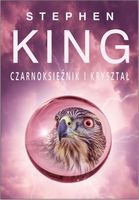



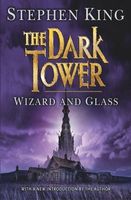
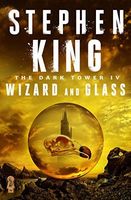
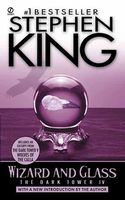
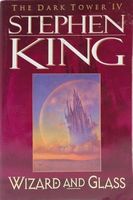
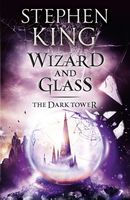
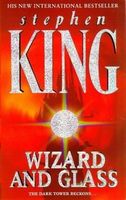
1. They were now flying through the mountain-range they had seen on the horizon: iron-gray peaks rushed toward them at suicidal speed, then fell away to disclose sterile valleys where gigantic beetles crawled about like landlocked turtles.
2. The town of Candleton was a poisoned and irradiated ruin, but not dead; after all the centuries it still twitched with tenebrous life—trundling beetles the size of turtles, birds that looked like small, misshapen dragonlets, a few stumbling robots that passed in and out of the rotten build ings like stainless steel zombies, their joints squalling, their nuclear eyes flickering.
3. In the town square, the Candleton Fountain split in two, spilling out not water but only dust, snakes, mutie scorpions, and a few of the blindly trundling turtle-beetles.
4. On the fence there were handbills—one for the Sex Pistols (a reunion tour, according to the poster, and Eddie thought that was pretty funny— the Pistols was one group that was never going to get back together), one for a comic, Adam Sandier, that Eddie had never heard of, one for a movie called The Craft, about teenage witches. Beyond that one, written in letters the dusky pink of summer roses, was this:
See the BEAR of fearsome size!
All the WORLD’S within his eyes.
TIME grows thin, the past’s a riddle;
The TOWER awaits you in the middle.
5. According to the sign, two outfits—Mills Construction and Sombra Real Estate—were going to combine on something called Turtle Bay Condominiums, said condos to be erected on this very spot. When? COMING SOON was all the sign had to say in that regard.
6. There was the Bear and Turtle Mercantile & Sundrie Items, where miners were forbidden by the Vi Castis Company to shop, and a company store where no one but grubbies would shop; there was a com bined jailhouse and Town Gathering Hall with a windmill-cum-gallows out front; there were six roaring barrooms, each more sordid, desperate, and dangerous than the last.
7. These thoughts were snatched out of her mind just as hands—strong ones —snatched the box of groceries from her arms. Cordelia cawed in surprise, shaded her eyes against the sun, and saw Eldred Jonas standing there between the Bear and Turtle totems, smiling at her. His hair, long and white (and beautiful, in her opinion), lay over his shoulders.
8. Sheemie could have been at the Delgado place two hours ago, if he’d wanted, but he had trudged along at a turtle’s pace, the letter inside his shirt seeming to drag at his every step. It was awful, so awful. He couldn’t even think about it, because his thinker was mostly broken, so it was.
9. „Bless the Turtle,” Reynolds muttered, and tapped his throat three times. He was terrified of rabies.
„You won’t bless anything if the Wizard’s Rainbow gets hold of you,” Latigo said grimly, and swung his attention back to Jonas.
10. Pettie wasn’t kilt. Dressed in a stained shift (a Pettie-skirt, one might say), the whore was standing on the path which led to the back privy, her hands clutched together above the swell of her bosom and below the drooping turkey-wattles of her neck. She was looking up at the sky.
11. „Wake up, sai! Wake up! In the name of the Turtle and the Bear, wake up!”
12. Now, suddenly, he knows that voice—it is the voice of the Turtle. He looks and sees a brilliant blue-gold glow piercing the dirty dark ness of Thunderclap. Before he can do more than register it, he breaks out of the darkness and into the light like something coming out of an egg, a creature at last being born.
„Light! Let there be light!”
the voice of the Turtle cries, and Roland has to put his hands to his eyes and peek through his fingers to keep from being blinded.
13. „You will kill everything and everyone you love,” says the voice of the Turtle, and now it is a cruel voice, cruel and hard. „and still the Tower will be pent shut against you.”
The gunslinger draws in all his breath and draws together all his force; when he cries his answer to the Turtle, he does so for all the gen erations of his blood: „NO! IT WILL NOT STAND! WHEN I COME HERE IN MY BODY, IT WILL NOT STAND! I SWEAR ON MY FA THER 'S NAME. IT WILL NOT STAND/”
Autor: XYuriTT
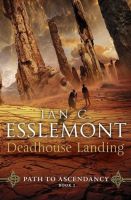 Tytuł: Deadhouse Landing
Tytuł: Deadhouse Landing
